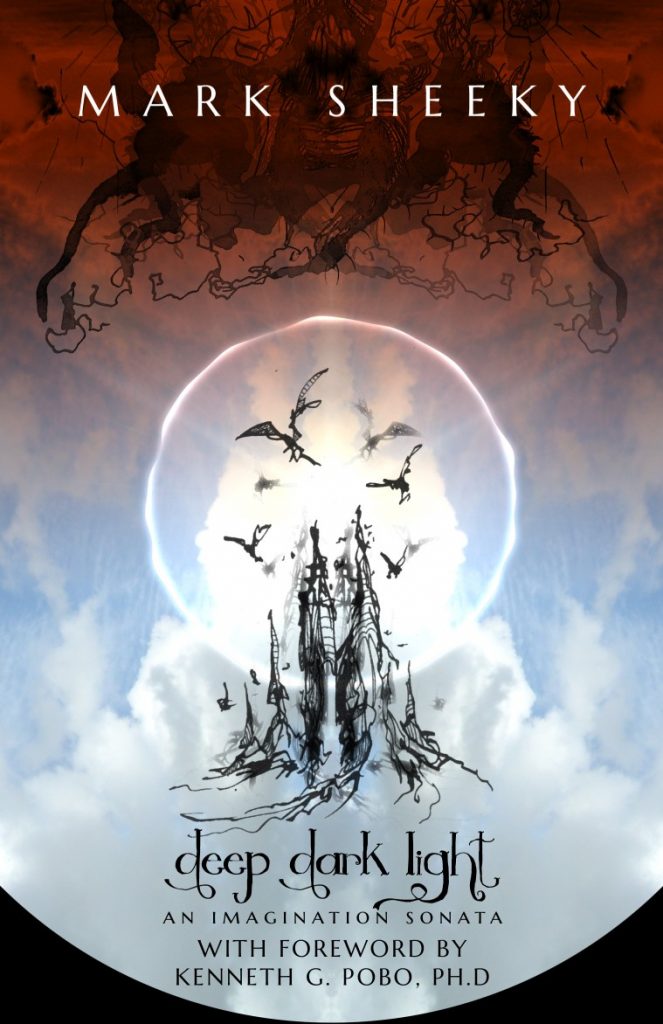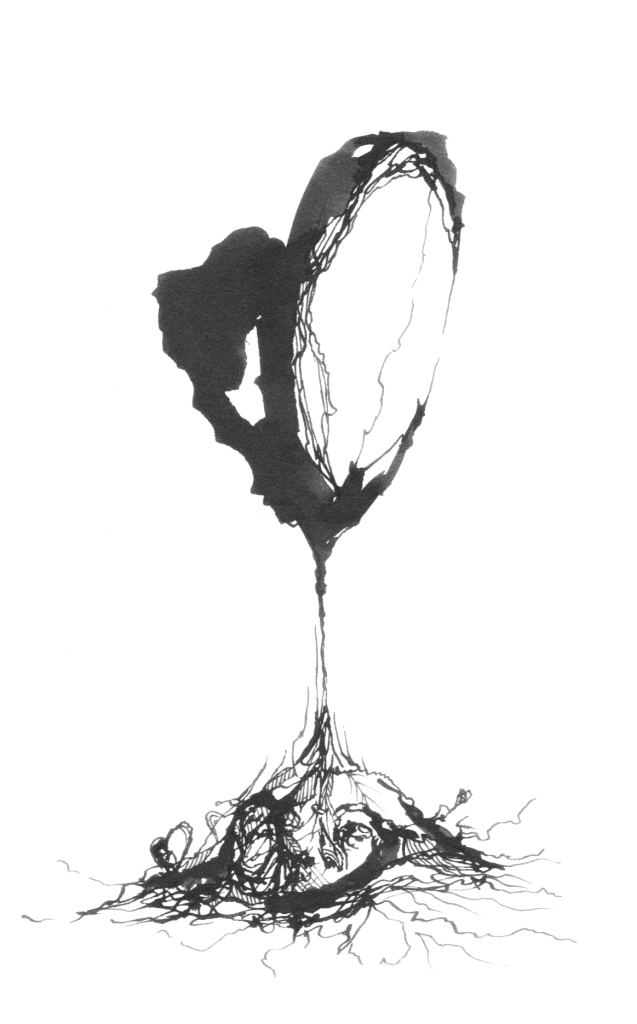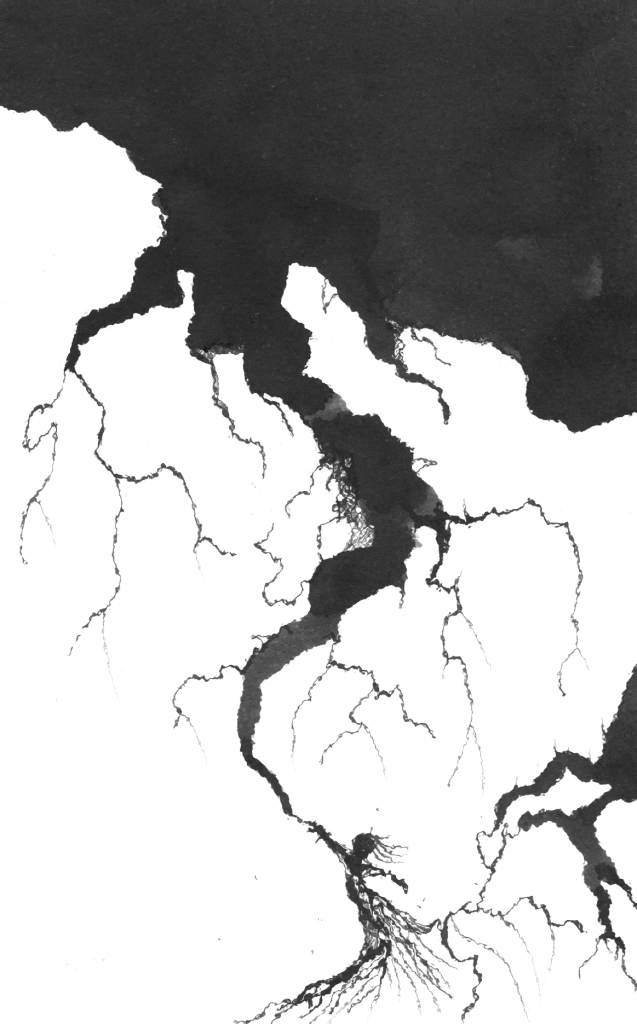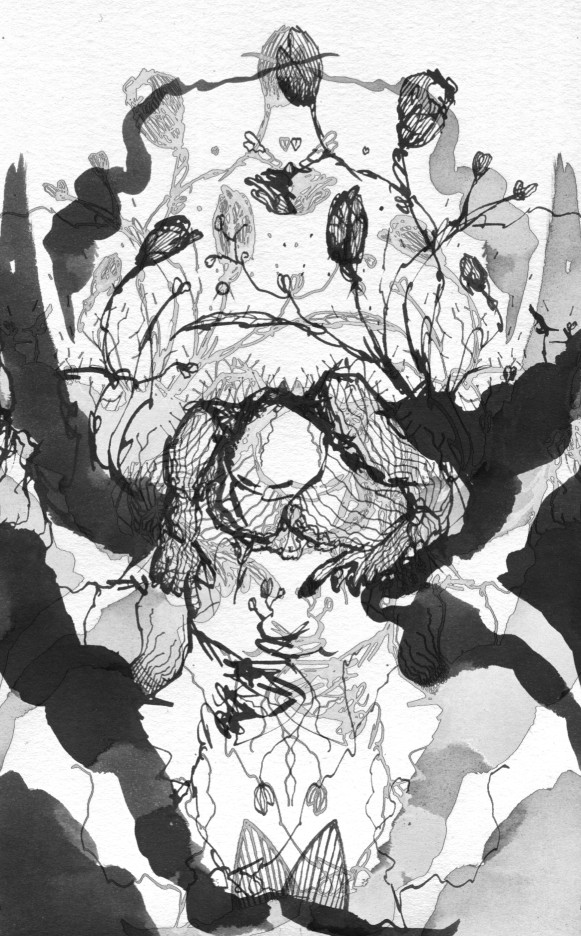Congratulations on your new book, Deep Dark Light, which is a surrealistic work in three parts, combining poetry and prose. Can you tell us about it?
Deep Dark Light is a combination of poetry, with lots of images, and a short story. It’s an experiment in form, inspired by classical music and how each section or movement of, say, a piano concerto is organised to portray a certain idea or mood, yet the whole thing is inter-related, too. The majority of poetry books are simply collections of poems about various things. Sometimes collections are themed, which gives the reader more of a strong sense of what the poems are about or how they are supposed to make you feel. I wanted to structure a book like that but include any form of text, breaking free of poetry to include stories, letter-like essays, thoughts, notes, and images. Perhaps the closest analogues are William Blake’s mythological books, but there was no intentional influence from those.
Deep Dark Light has a theme too. It is a somewhat surrealistic work that has a feeling like a journey or quest, always searching and trying to understand, looking for light. Some of my writing is rather abstract, and this is designed to evoke a music-like feeling, a journey from darkness to light, rather like a symphony by Beethoven or Sibelius.
I bet everyone thinks this is a very odd book already! Perhaps it is. For me, the writing process was something of a quest; I find that many books are. I think that many writers quest and seek things while writing, and that this often manifests itself in the story itself. So many books are about looking for an ending, the narrative reflecting exactly the psychology of the author. Do the writers notice? As a reader, I didn’t until I began writing, and then I saw this pattern in so many novels. I hope some people will find it inspiring.
How did you structure the novel?
The first part consists of short poems with illustrations. These arose from a period of introspection, a searching for artistic meaning. This opens the gateway to a second part about a larger quest for meaning. The reader is also asked questions and, hopefully, engaged in this unusual dialogue. Parts of the second part involve physics and philosophy.
The final section is a surrealistic story that brings together some of the thoughts and ideas explored, and on some level unifies and concludes these. It is the story of George, a man searching for his lost love who has been kidnapped or taken somewhere. George begins before a vast door at sunset, and is pulled forwards through various fantastical worlds, ultimately towards love, daylight.
What philosophy do you explore?
The short philosophical pages, which are often something like prose-poems, are generally about the nature of thought and reality. They’re strongly related to Descartes; my own Meditations on his.
What inspired you in the first place?
The first section was written in a short period when I wanted to push some sort of boundary in poetry, to write something that was somehow universal, rather than social, or about something specific. In effect these poems were about art and the serious matter of living a life of creativity. I set those poems aside for some time, for over a year, then looked at them again and thought that they deserved to be put together. They were not long enough to make a book from, so I had the idea of making those the first ‘movement’ of a larger work, a grand experiment.
You have also illustrated the book, with pen and ink. Is a lot of your writing imagery based, would you say?
Definitely. I find writing easier when I form an image and describe it, and my narrative writing is always a sequence of images. In this book, as in all of my illustrated books so far, the illustrations were all created after the poems; I wanted to make a multi-media work, but I certainly had some images in my mind before I started to write, too.
Perhaps the most image-rich area in the writing is the story at the end, which isn’t illustrated. Sometimes illustrations can strongly colour a story. Can anyone now imagine Alice in Wonderland without the famous drawings? In prose, one has to be careful not to ride over the reader and the images that their mind makes. Illustrations, in the technical sense, can do that, so my images are more like complements to the text, devices to augment the mood rather than depict anything.
The ultimate motivation for the images is that I wanted the book to look beautiful, to create a book that was a work of art in every sense. These things can’t be hurried along. All beautiful things take time and care to construct. Addition. Subtraction. Addition. Subtraction. Sculpting until everything feels right.
Did your imagination surprise you along the way, or did you have a definite plan for the whole novel?
The first set of poems were certain and written in a short period, then it was a case of making things that fitted with those, parts that made sense and chimed. I like to make a plan before starting things, working out all of the main points out, then fill in the contents with a relatively high level of detail so that a first draft is largely complete. As a painter, musician, and occasional sculptor too, I can see that all art is about starting rough and then refining. All writers probably do this too, even when they don’t form a conscious plan: by the end of the first draft, they can start to refine.
I prefer to have a skeleton that lists the main flows of scenes and characters and emotions, and use that crucial blueprint as my guide. Once you stick to that plan, the rest can be anything and the result will still work. No matter how many layers of refinement an artwork receives, one of my tenets is that a good artwork can be called finished at any stage and still work.
A global plan also gives an author a sense of feeling in advance. The key to writing, as in any art, is to feel what you want to express, then express yourself through your medium. This is a lot easier if you know what you are supposed to be feeling.
Could we have a snippet from Deep Dark Light, with commentary?
This is from the Dark section:
“Dearest Lucine, I have discovered the most wonderful thing, that we are connected. Each of us lives only in the minds of others. We can know ourselves, but we cannot ever know what came before us, or what comes after us. Our lives, from our perspective, are infinite. Life, death, the passage of time, these are social constructs, things only exist in others, the people we see. We know death only through seeing it in others, and by feeling the decay in ourselves. We cannot die ourselves; we exist, then do not. How can anything experience non-existence?
We are all citadels of cells, tiny animals that work together to make us. Tiny animals, trying hard to make their own way, each sharing, loving, giving.
Our perspective of the universe is unique. This makes our experience of the universe unique, but also makes our knowledge unique, our truth unique and therefore our universe unique. There is no shared universe, we each have a personal universe, and you are in mine.
There was a time when you were alive in mine.
You exist in my memory.”
Like a lot of that section it is a written thought about existence and what is real, what is true, and what is a right path. It has elements of searching, and coping with loss, but also something larger and beyond normal life. This part also links with the story at the end, as the (unnamed) narrator here is George, the protagonist, and Lucine is his partner, the love that he has lost.
Are you working on any other literature at the moment?
I’ve been working on poetry, recently. The poems here were written some years ago, well, maybe not that long ago, but for me, they seem to be from a different epoch. So much has changed in my literary life this year, due to getting to know some really good poets and writers, and reading more of the best poetry. I want to focus on producing a good poetry collection for its own sake, and have created a theme of the circus, a rich area for characters, and also, hopefully, an alternative reflection of life. I may structure it like Deep Dark Light to some degree, adding an overall shape to it. Good aesthetics is a balance between order and chaos. Structure adds order, and looser forms add chaos. These are the condiments of literature.
Where is the best place to get a copy of Deep Dark Light?
Amazon, available worldwide.
I’d like to end with a few words from the foreword, a third party perspective on the book which your readers might find informative. It was written by Ink Pantry author Dr. Ken Pobo, Professor of English Literature from Widener University:
“If you are looking for a straight-up narrative work, move along. Connections happen here—in each illustration and written piece—but these are not built from traditional forms of narrative. The words converse with the illustrations. Sometimes we clearly overhear what they say; other times we have to go strictly by impulse and intuition. In John Lennon’s song “Intuition” the speaker says that intuition takes him everywhere. Everywhere, nowhere, light, dark.”





